Invented by Noel G. GAYLE, COREFOUNT LLC
One of the key drivers of the transformation engine market is the increasing demand for digital transformation. As businesses seek to modernize their operations and adopt new technologies, they are turning to transformation engines to help them achieve their goals. These platforms enable businesses to automate manual processes, digitize data, and leverage advanced analytics to gain insights into customer behavior and market trends.
Another key driver of the transformation engine market is the rise of cloud computing. As more businesses move their operations to the cloud, they are looking for software platforms that can help them manage their data and applications in a secure and scalable way. Transformation engines are well-suited to this task, as they can be deployed in the cloud and offer a range of integration options to connect with other cloud-based systems.
The market for transformation engines is also being driven by the increasing use of AI and ML in business operations. These technologies enable businesses to automate complex tasks, analyze large amounts of data, and make more informed decisions. Transformation engines can help businesses leverage these technologies by providing a platform for integrating AI and ML algorithms into their operations.
In terms of industry verticals, the market for transformation engines is seeing significant growth in sectors such as healthcare, finance, and retail. In healthcare, for example, transformation engines are being used to automate patient data management, streamline clinical workflows, and improve patient outcomes. In finance, transformation engines are being used to automate back-office processes, reduce costs, and improve compliance. And in retail, transformation engines are being used to personalize the customer experience, optimize supply chain operations, and improve inventory management.
Overall, the market for transformation engines is expected to continue to grow in the coming years as businesses seek to modernize their operations and adopt new technologies. With the increasing demand for digital transformation, the rise of cloud computing, and the growing use of AI and ML, transformation engines are well-positioned to play a key role in driving innovation and growth across industries.
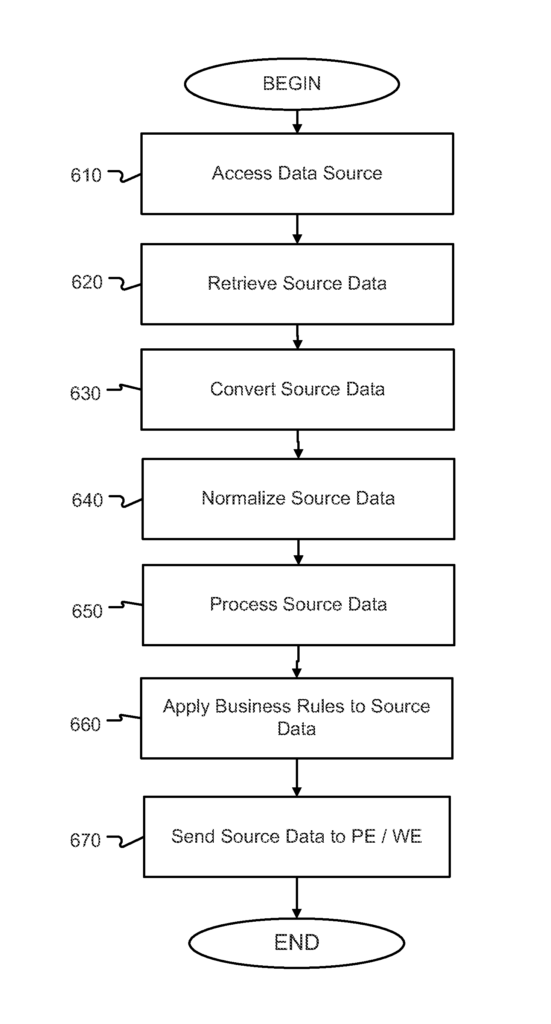
The COREFOUNT LLC invention works as follows
A transformation engine that retrieves data from multiple disparate sources is disclosed. The engine provides data that are consistent and normalized. The transformation engine consists of a number of interfaces which receive data from disparate databases. The source data consists of a number of data elements. The transformation engine also includes a converter which aggregates and transforms the source data received so that the plurality data elements can be recognized as being substantially equal; a data processor who formats the source data received by merging and prepping the source data received; and a rule-applying business rule that filters the source data received.
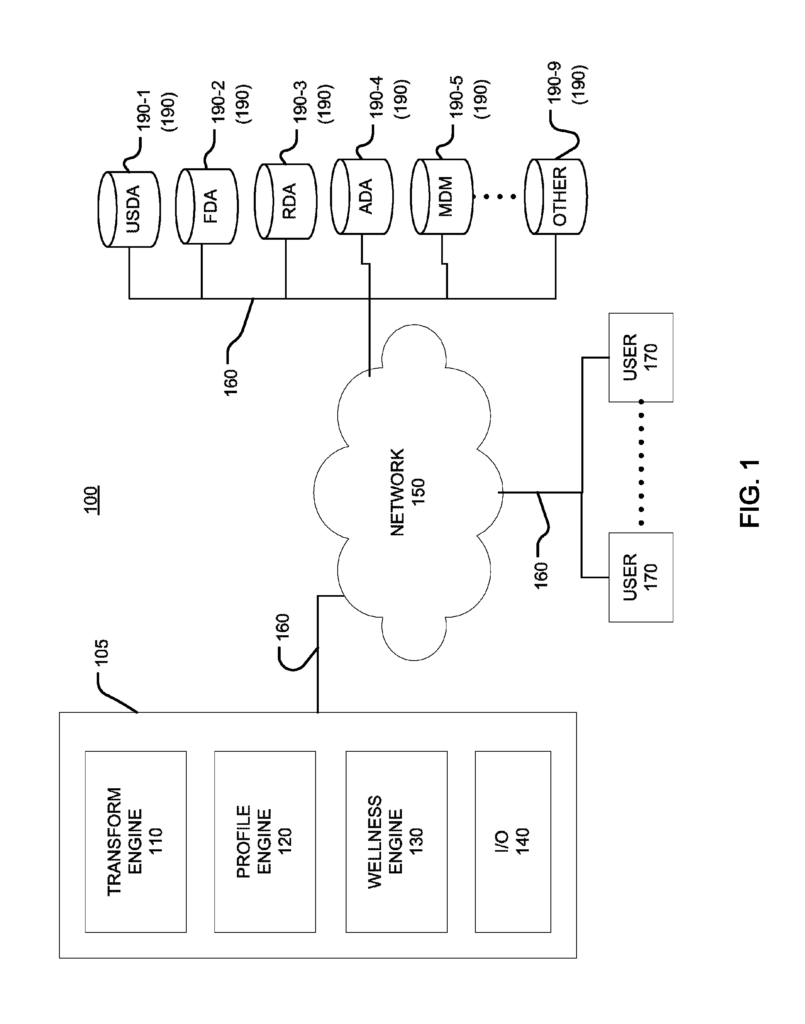
Background for Transformation engine
The amount of data on wellness that is available today is unstructured and vast. In environments like the Food and Drug Administration, United States Department of Agriculture, or National Institute of Health, wellness-related information is available unstructured, noncorrelated, and/or in incomplete form. In addition, there are numerous commercial applications that provide incomplete wellness-related information due to commercial proprietary concerns.
The present disclosure provides methods, systems and computer programs for retrieving data from various data sources, including wellness-related data. These data are then consolidated, aggregated and processed to create a unique set of data for determining the user’s criteria.
The method, system, and computer program described herein are designed to access and retrieve source data from disparate sources and then consolidate, aggregate, and process the data retrieved in order to create a unique set of data for determining user criteria.
According to one aspect of the disclosure a transformation engine that retrieves data from multiple disparate sources and produces data that is consistent is disclosed. The transformation engine includes: a plurality interfaces for receiving source data from disparate databases. The source data comprises a plurality data elements. A converter aggregates and converts this source data to make the plurality data elements recognizable as substantially equivalent. The data processor can be configured to receive first and second source files and format them according to an input format from the business rule applicator. The plurality of interfaces may comprise at least one of an application program interface, an open database connectivity, and an input-output-interface. The application program interface can access at least one database, including: a USDA/FDA database, an ADA/MDM database, an IM database or an RDA/RDI/RMMS database. The business rule applicator can be configured to filter received source data according to input requirements for at least one of the following: a nutrient intake processor, a drug interaction processer, and a nutritional impact processor.
The transformation engine can further include a normalizer which analyzes first and second source data within the received source data, and formats either the first or second source data to make a determined quantity of the first data element of the plurality data elements substantially equal to the quantity of the second data element.
The transformation engine can be included in the condition engine.
The disclosure also discloses a method for transforming data from disparate sources into data that’s consistent, mapped, and correlated. The method includes: receiving at a plurality interfaces the source from the plurality disparate data sources. The source data comprises a first and second data elements. The categorizing and parsing of aggregated and transformed source data can be done in accordance with the input format of a Business Rule Applicator.
The method can further include: analyzing received source data and formatting received source data in a way that the quantity of first data element determined is substantially equivalent to the quantity of third data element.
The method can also include filtering received source data according to the input requirements for at least one processor, such as a nutrient-calorie intake processor, a drug interaction processer or a nutrient-impact processor.
A transformation engine is disclosed in a further aspect. The transformation engine includes: a plurality interfaces, which are each configured to receive data from atleast one of a number of disparate database; a converter configured for aggregating and converting data received from the plurality disparate databases, so that the first and second data elements can be recognized as being substantially identical, the received data including the first and second data elements; a processor configured to combine and prepare the data received; and a filter configured by the business rule applicator. The data processor can be configured to format source data according to an input format for the business rule application. The plurality of interfaces may comprise at least one of an application program interface, an open database connectivity, and an input-output-interface. The application program interface can be configured to connect to at least one of the following databases: a USDA/FDA database, a PDR/ADA database, an IM/IMDB database, an RDA/RDI/RDI database and an RMMS/RMMS database.
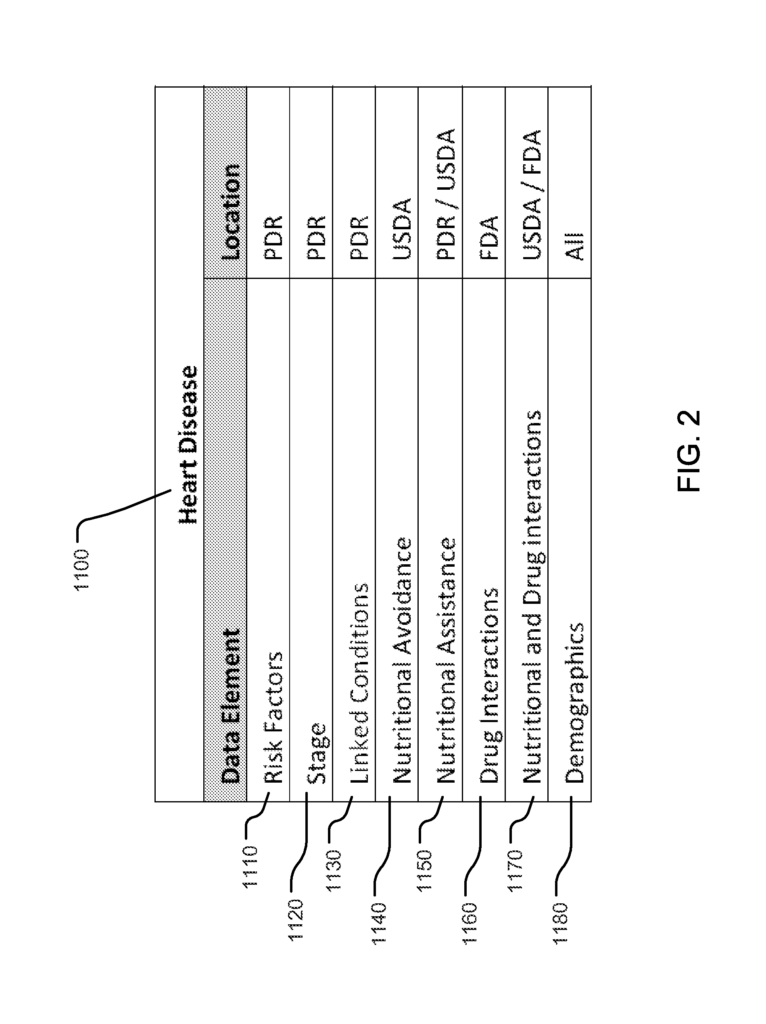
The transformation engine can further include a normalizer configured for analyzing and formatting a quantity from the first data element to a volume of a third element as substantially equivalent.
The detailed description or drawings may reveal additional features, benefits, and embodiments. It is important to note that the summary and detailed descriptions are intended as examples and to explain the invention without restricting its scope.
The disclosure, and its various features and advantages are explained in greater detail by referring to the non-limiting examples and embodiments that are described or illustrated in the accompanying drawing and detailed in this description. The features shown in the drawings may not be drawn to scale. Also, features from one embodiment can be used with another embodiment, as a skilled artisan will recognize, even though they are not explicitly stated. It is possible to omit descriptions of well-known processing techniques and components in order not to unnecessarily obscure embodiments. The examples provided herein are meant to help those skilled in the art understand how the disclosure can be used and further allow them to practice embodiments of disclosure. The examples and embodiments should not be interpreted as limiting the disclosure. It is also noted that the same reference numbers represent the same parts in all the views of the drawings.
As used in this disclosure “a?computer’ means any machine or device, circuit or component, module, system of machines or devices, circuits or components, modules or the similar, that is capable of manipulating information according to one or several instructions. For example, without restriction, processors, microprocessors or central processing units; a general-purpose computer or super computer; a personal computer or laptop computer or palmtop computer or notebook computer; a desktop or workstation computer or server or arrays of them. The computer can also include an electronic device that is configured to communicate via a communication channel. The electronic device can include, for instance, but not be limited to, smart phones, PDAs, mobile computers, stationary computers, smart phones, mobile stations, user equipment or the like.
As used in the present disclosure, “a?server’ is any combination of hardware and/or software, including at lease one application or at least one computer, that performs services for connected clients, as part of a Client-Server architecture. At least one server application can include, but not be limited to, an application that accepts connections from clients to service requests by sending responses back to the clients. The server can be configured to run at least one application for long periods of time, even under heavy workloads. The server can include multiple computers, and the at least application may be divided between the computers based on the workload. Under light load, for example, the application can be run on one computer. Under heavy load, however, it may be necessary to use multiple computers in order to run at least one of the applications. “The server or one of its computers can also be used as workstations.
As used in the disclosure, “a ‘database’” is any combination of hardware and/or software, including at minimum one application, and/or one computer. The database can include a collection of structured records or data that is organized in accordance with a database design, including but not limited, to, at least one relational model. Database management system applications (DBMS), as they are known, can be included in the database. At least one application can include, but not be limited to, an application that accepts connections from clients to service requests by sending responses back to the clients. The database can be configured to run at least one application under heavy workloads and unattended for long periods of time.
A ?network,? As used in this disclosure “a network” means an arrangement of at least two communication links. A network can include, for instance, the Internet or a local network. The network can be configured to communicate via wireless or wired communication media. The network can include one or more topologies. For example, the topologies of a point-topoint topology or a bus topology.
As used in the present disclosure, “a?communication link’ means a wired or wireless medium that transmits data between two points. A wired or wireless medium can include, for instance, a metallic link, a radio-frequency (RF) communication, an Infrared communication, an optical link, or other similar devices. The RF communication links may include, for instance, WiFi, WiMAX IEEE 802.11, DECT 0G 1G 2G 3G 4G standards, Bluetooth or the like.
The terms “including”, “comprising” and variations thereof, as used in this disclosure, mean ‘including but not limited to? The terms “including” and “comprising”, as used in the disclosure, refer to ‘including, but without limitation,’ unless otherwise specified.
The terms “a”, “an” and “the”, as used in the disclosure, mean ‘one or more’, unless otherwise specified.
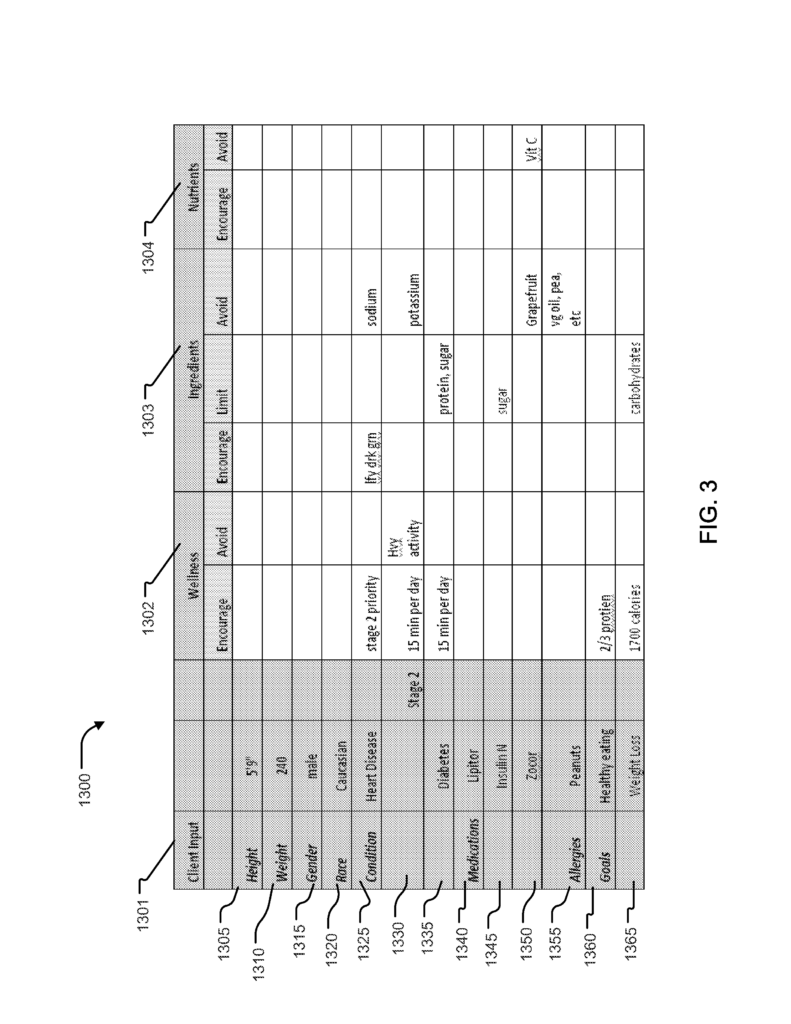
Devices in communication need not always be in constant communication, unless otherwise specified. Devices that are communicating with each other can communicate either directly or indirectly via one or more intermediaries.
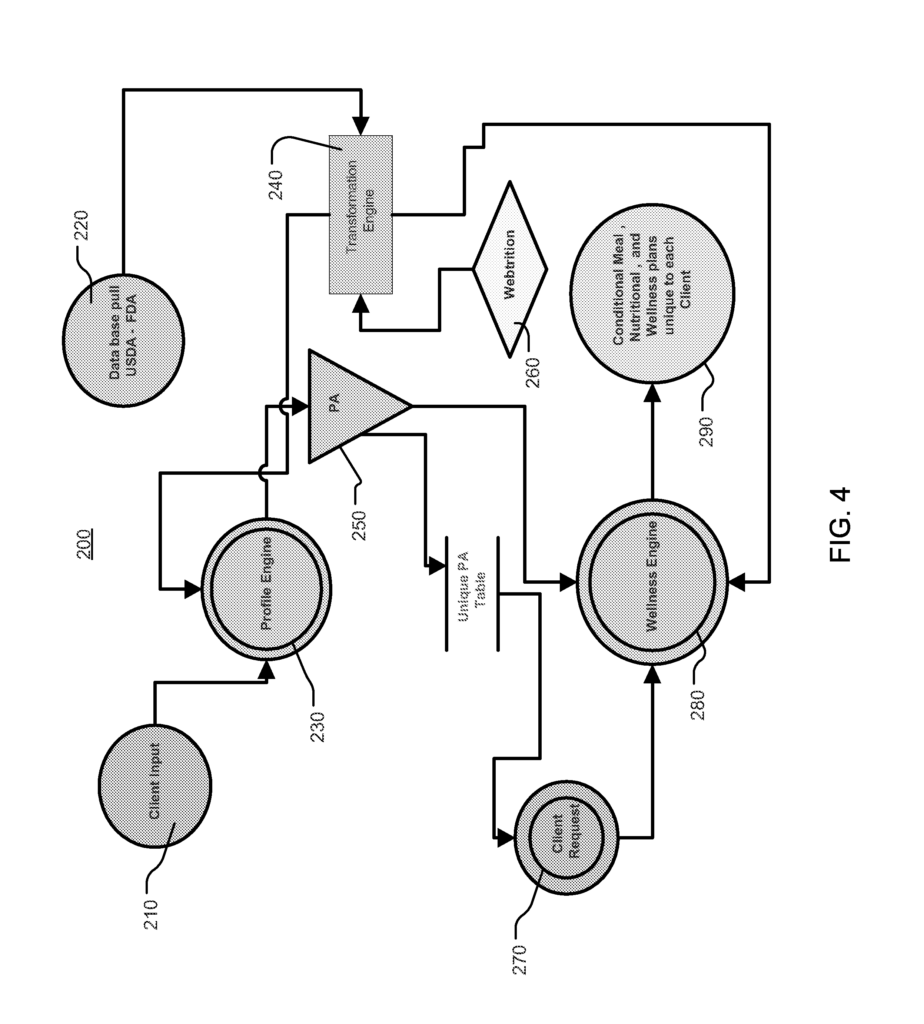
Click here to view the patent on Google Patents.
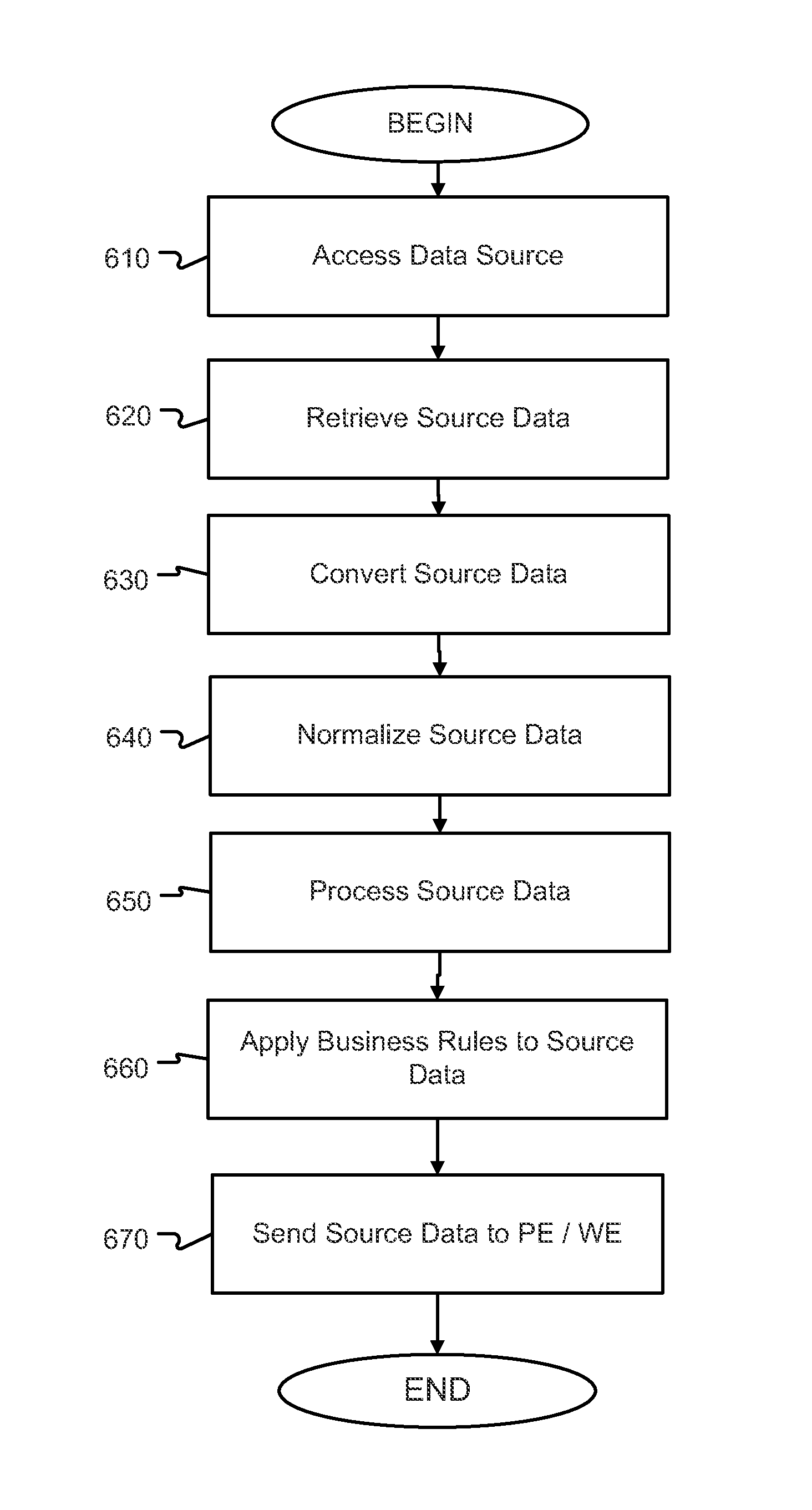
Leave a Reply